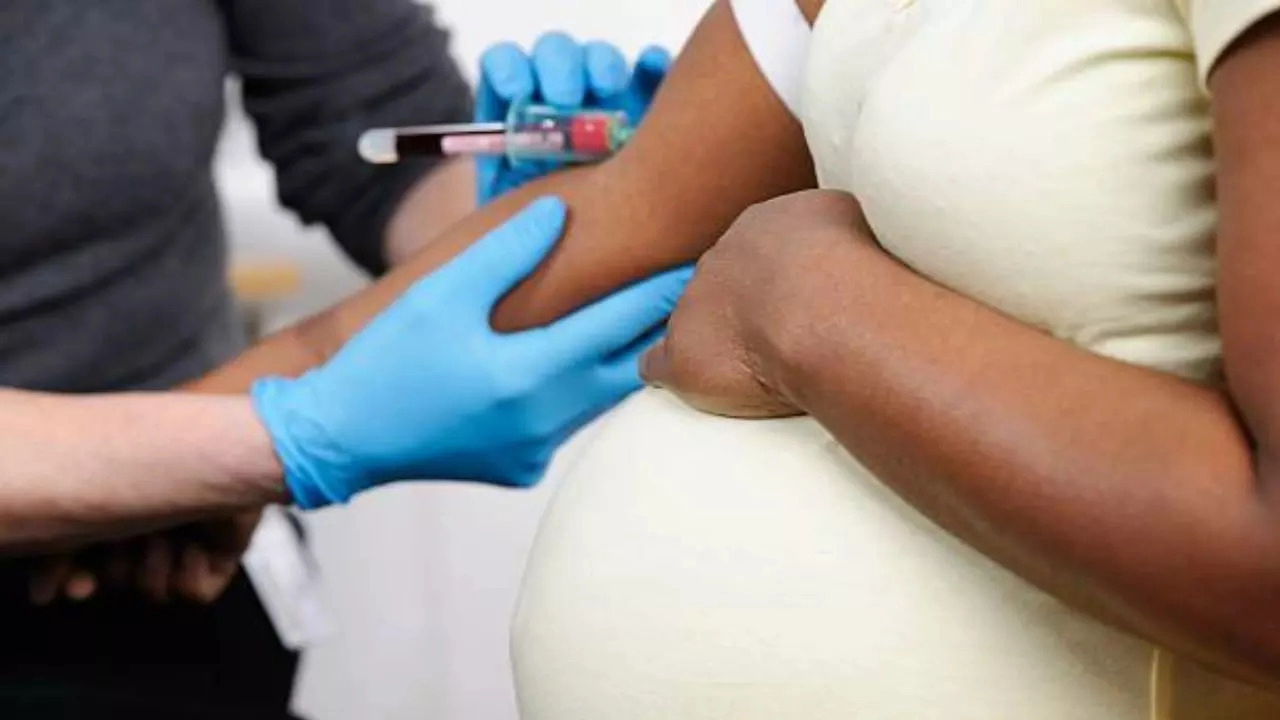Pallavi Mehra • 22 Oct 2024
New Blood Test Could Identify Pregnant Women At Risk For Preeclampsia, Reveals Study

New Blood Test Could Identify Pregnant Women At Risk For Preeclampsia, Reveals Study (Image Credits: iStock)
A routine blood test may soon help doctors identify pregnant women at risk for preeclampsia during labour, according to a new study presented at the American Society of Anesthesiologists annual meeting in Philadelphia. Preeclampsia is a dangerous condition marked by high blood pressure and is one of the leading causes of maternal mortality. This study shows a milestone in predicting preeclampsia, which could lead to better management of labour and reduce risks for mothers and babies.
Researchers discovered that a woman’s risk of developing preeclampsia can be predicted by analyzing the levels of two specific blood proteins: fibrinogen and albumin. When a woman is admitted to the hospital for delivery, doctors can assess her fibrinogen-to-albumin ratio (FAR), which could serve as a reliable indicator of preeclampsia risk.
According to the study, women with an elevated FAR could have up to a 41% increased likelihood of developing preeclampsia. “Our study shows that FAR can be a predictive tool that gives anesthesiologists and obstetricians a new method for assessing a labouring mom’s risk of developing preeclampsia when they are admitted to the hospital,” said Lucy Shang, lead researcher and medical student at the Icahn School of Medicine at Mount Sinai in New York City.
Preeclampsia is relatively common, affecting between 5% and 10% of pregnant women, according to the study’s background notes. It can lead to several severe complications, including premature birth, bleeding, kidney and liver damage, seizures, or stroke. In extreme cases, the condition can be life-threatening for both mother and baby.
Fibrinogen plays a role in blood clotting and inflammation, while albumin helps regulate fluid balance and transports essential hormones, vitamins, and enzymes throughout the body. Preeclampsia disrupts the normal functioning of these proteins, causing fibrinogen levels to increase and albumin levels to drop. This imbalance leads to a higher FAR, which is often associated with inflammation, infection, and other serious health issues.
In this study, researchers analyzed the medical records of more than 2,600 women who gave birth between 2018 and 2024, including 584 women with mild preeclampsia and 226 with severe cases. Severe preeclampsia was defined by a blood pressure of 160/110 or higher, along with symptoms such as severe headaches, elevated liver enzymes, visual disturbances, low platelet count, or kidney problems.
The results revealed that women with a FAR of at least 0.1 had a 24% higher risk of preeclampsia, while those with a FAR of over 0.3 faced an increased risk of more than 41%. Although there is no universally established normal FAR value, this study suggests that women with higher FAR levels require extra monitoring and care during labour.
Doctors can take several precautions for women identified as high-risk, including more frequent blood pressure checks, maintaining stable fluid levels, and providing early pain management through an epidural. These measures can help prevent complications during labour and improve outcomes for both mother and child.
Shang emphasized that the FAR ratio should be assessed for all pregnant women, particularly those at higher risk, such as Black women, women with preexisting high blood pressure, and those who are obese. Studies show that Black women are 60% more likely to develop preeclampsia than white women and face a higher risk of severe outcomes like kidney damage or even death.
“Additional research is needed to determine the exact FAR range that would be concerning,” said Shang. She hopes future studies will lead to the incorporation of FAR testing into routine prenatal care as a predictive tool for the early identification of preeclampsia.
Get Latest News Live on Times Now along with Breaking News and Top Headlines from Health and around the world.